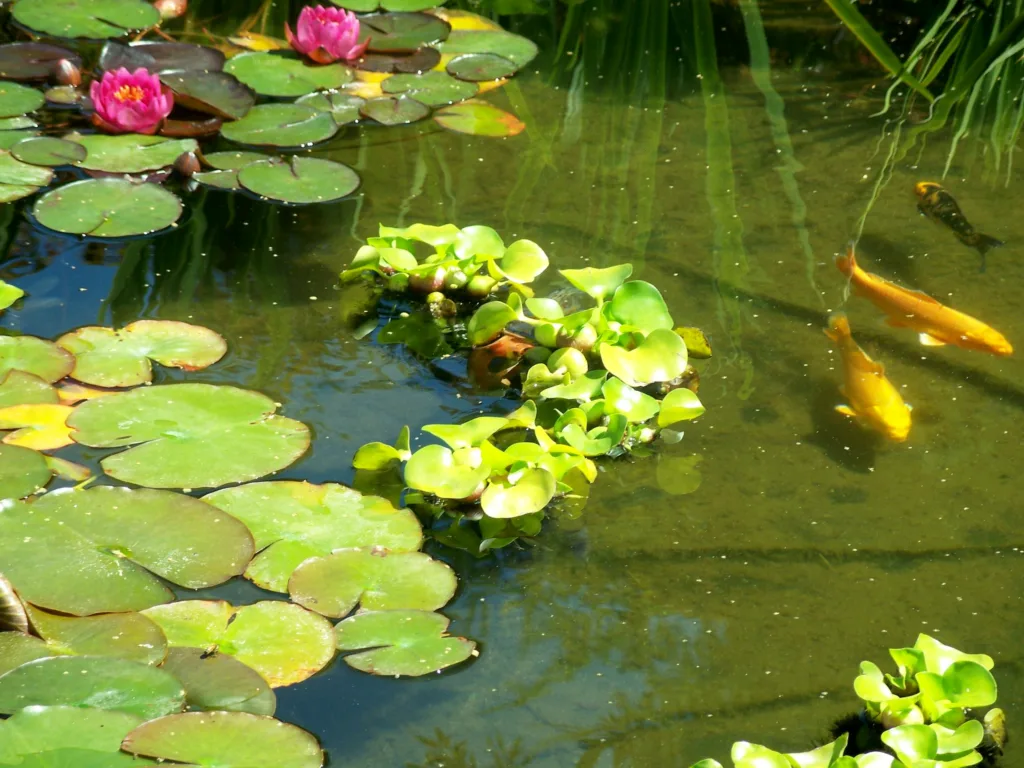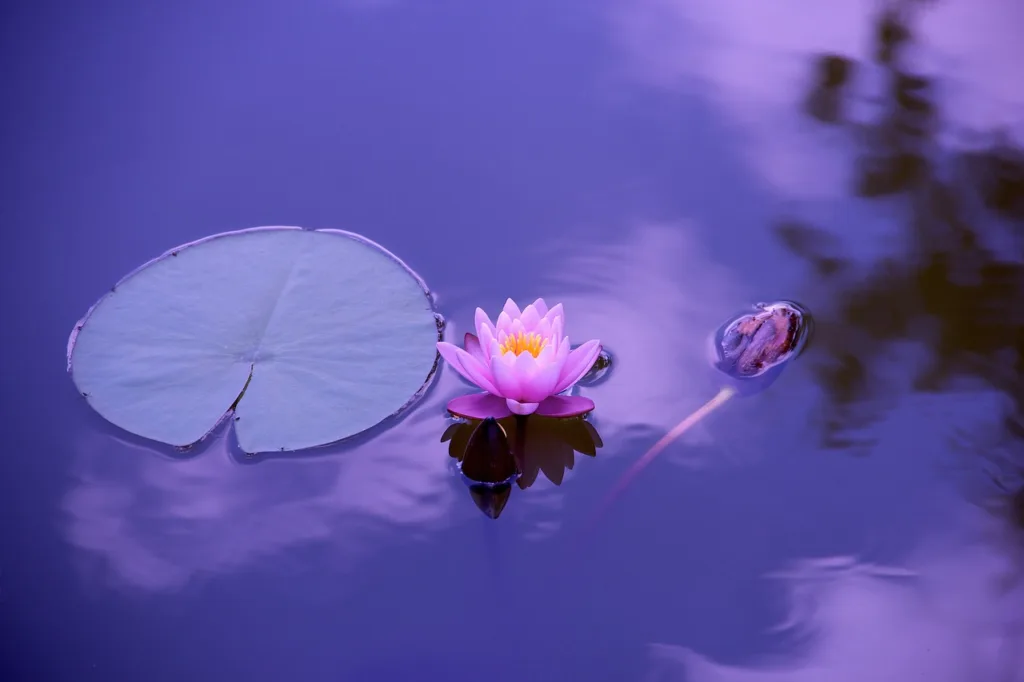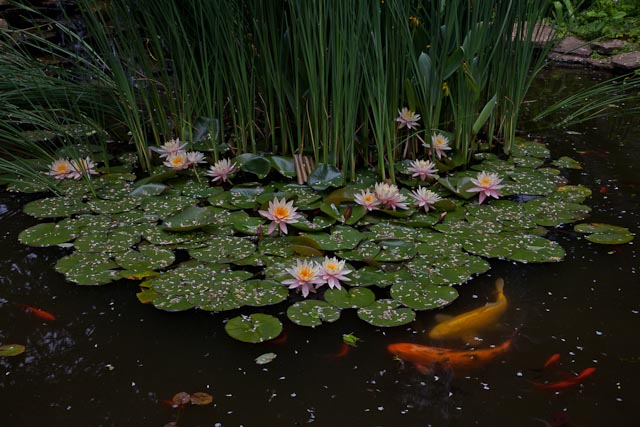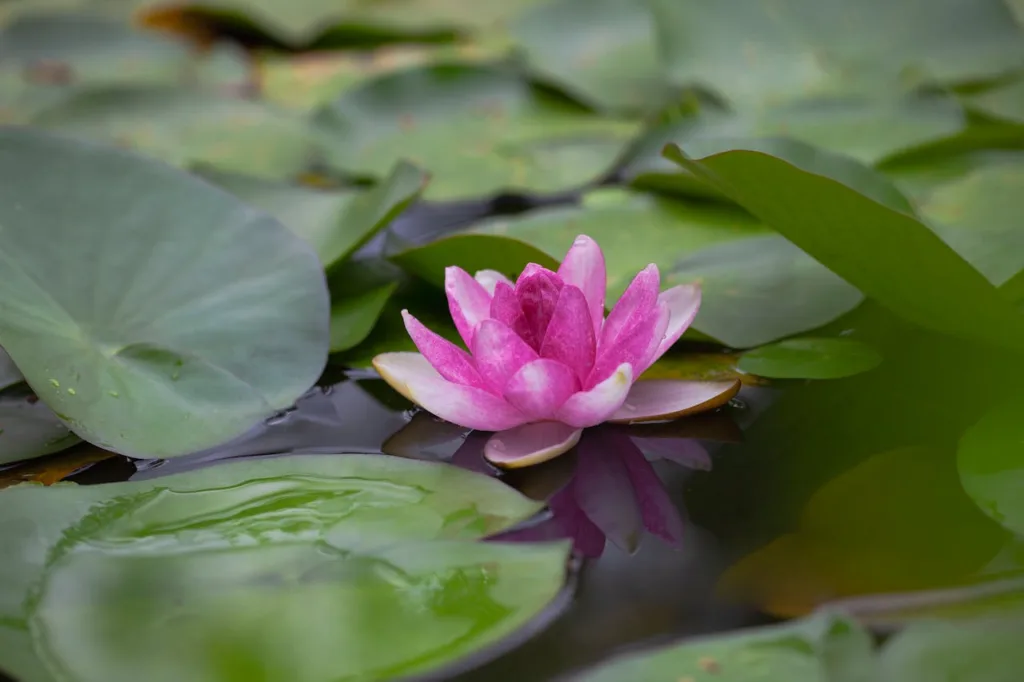Adding water lilies to your koi pond not only adds to its aesthetic appeal but also contributes to the overall health of your aquatic ecosystem. Water lilies provide shade, oxygenate the water, and create a harmonious environment for the koi fish.
Planting water lilies in your koi pond is an enjoyable way to enhance its beauty and create a balanced aquatic ecosystem.
In this guide, we will walk you through the step-by-step process of planting water lilies in your koi pond.

Selecting the Right Water Lilies
Before you start planting water lilies in your koi pond, it’s essential to choose the right variety that will thrive in your specific aquatic environment.
Here are some key factors to consider when selecting water lilies for your pond:
- Hardiness: Ensure you choose water lilies that are suitable for the climate in your region.
- Size: Consider the size of your pond and choose water lilies that will not overcrowd the space.
- Color: Select water lilies with colors that complement the existing flora and fauna in your pond.
- Sunlight Requirements: Different water lily varieties have varying sunlight needs, so make sure to choose one that matches the conditions in your pond.
Once you have selected the right water lilies for your koi pond, it’s time to move on to the planting process.
Preparing Your Koi Pond for Planting
Before you plant the water lilies, it’s crucial to prepare your koi pond to create an optimal environment for their growth. Here’s how you can prepare your pond effectively:
- Clear Debris: Remove any debris, such as leaves or algae, from the surface of the water to prevent them from hindering the growth of your water lilies.
- Check Water Quality: Test the water quality to ensure that it is suitable for plant growth. Water lilies thrive in clean water with the right pH levels.
- Create a Planting Area: Designate a specific area in your pond where you will plant the water lilies. Make sure the area receives adequate sunlight for its growth.
- Use Planting Containers: Consider using planting containers to prevent the water lilies from spreading too quickly and overtaking your pond.
By following these steps, you can create a conducive environment for your water lilies to flourish.

Planting the Water Lilies
Now that you have selected the right water lilies and prepared your koi pond, it’s time to plant them. Follow these steps to ensure a successful planting process:
Step 1: Fill the Planting Containers
Fill the planting containers with aquatic planting soil, leaving some space at the top for the water lilies to be placed.
Step 2: Plant the Water Lilies
Carefully place the water lilies in the planting containers, ensuring that the roots are spread out evenly. Cover the roots with more planting soil and press it down gently to secure the plants in place.
Step 3: Submerge the Planting Containers
Submerge the planting containers in the designated area of your koi pond, making sure that the water lilies are at the right depth. The crown of the water lilies should be at or just below the surface of the water.
Step 4: Fertilize the Water Lilies
Add aquatic plant fertilizer to the planting containers to provide essential nutrients for the water lilies’ growth. Follow the manufacturer’s instructions for the proper application of the fertilizer.
Step 5: Maintenance
Regular maintenance is key to ensuring the healthy growth of your water lilies. Here are some maintenance tips to keep in mind:
- Pruning: Trim dead or decaying leaves from the water lilies to promote new growth.
- Fertilization: Periodically fertilize the water lilies to support their growth and blooming.
- Pest Control: Keep an eye out for pests that may harm your water lilies and take appropriate measures to protect them.
Benefits of Planting Water Lilies in a Koi Pond:
Beauty Enhancement:
Water lilies add natural beauty and visual appeal to a koi pond, enhancing its overall aesthetics. The vibrant colors of lily flowers and floating leaves create a picturesque and serene environment.
Natural shade and coolness:
The broad leaves of water lilies provide shade on the surface of the pond. This natural shade helps regulate water temperature, preventing overheating on sunny days and providing a cooler environment for the koi.
Water Filtration:
Water lilies play a role in water filtration by absorbing nutrients such as nitrogen and phosphorus. Their presence can contribute to maintaining water quality by reducing algae growth and improving overall pond clarity.
Oxygenation:
During the day, water lilies undergo photosynthesis, releasing oxygen into the pond. This oxygenation benefits both the koi and other aquatic life, promoting a healthy ecosystem.
Habitat for aquatic life:
The submerged parts of water lilies provide shelter and hiding places for small aquatic organisms, contributing to the biodiversity of the pond. This can attract beneficial insects and create a more balanced ecosystem.
Reduction in algae growth:
By shading the pond surface and competing for nutrients, water lilies help reduce unwanted algae growth. This natural control of algae contributes to water clarity and a more attractive pond.
Haven for koi fry:
Water lily leaves and stems provide a safe and protected environment for koi fry (baby koi). The complex network of leaves protects them from potential predators, promoting the survival of young koi.
Erosion prevention:
Water lilies’ roots help stabilize the pond substrate, preventing soil erosion. This is especially beneficial in ponds with koi, as the fish can stir up the substrate while foraging.
Advanced Koi Health:
A well-balanced and naturally filtered pond, with the presence of water lilies, can contribute to the overall health and well-being of koi. Clean water and a stable ecosystem support the growth and vitality of fish.
Therapeutic and relaxing environment:
The presence of water lilies creates a tranquil and natural environment, providing a therapeutic and relaxing environment for pond enthusiasts. The serene environment enhances the enjoyment of the pond as a recreational spot.

Conclusion
Planting water lilies in your koi pond can be a rewarding experience that adds beauty and serenity to your outdoor space.
By following the steps outlined in this guide, you can successfully plant water lilies in your pond and create a thriving ecosystem for your koi fish.
Remember to choose the right water lilies, prepare your pond adequately, and follow the planting and maintenance steps to ensure the health and vitality of your water lilies.
Enjoy the beauty of these stunning aquatic plants as they bloom and flourish in your koi pond!
FAQs
Can you put a water lily in a koi pond?
- Yes, you can put water lilies in a koi pond. However, it’s essential to consider the depth of the pond, as water lilies prefer specific water depths for optimal growth. Additionally, be mindful of the koi’s behavior, as they may nibble on the lily pads.
Do water lilies have to be planted in the soil?
- Yes, water lilies should be planted in soil, preferably a specialized aquatic planting mix or heavy garden soil. Planting in soil allows the water lily to anchor itself and obtain essential nutrients for growth.
How many water lilies in a pond?
- The number of water lilies in a pond depends on the size of the pond and the specific water lily varieties chosen. It’s essential not to overcrowd the pond to ensure each water lily receives sufficient sunlight and space to thrive. As a general guideline, space water lilies at least 3 to 5 feet apart in a larger pond.

